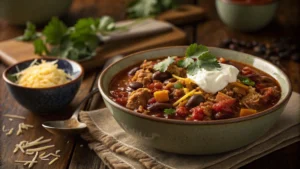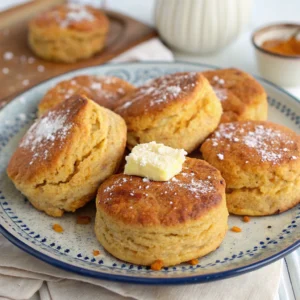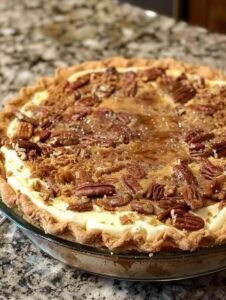
Preserve Summer’s Bounty: How to Make Sweet and Tangy Pickled Bell Peppers
By Jason Griffith
As summer reaches its peak, bell peppers burst with color and flavor. What better way to capture that vibrant taste year-round than by pickling them? These Homemade Pickled Bell Peppers are sweet, tangy, and have a delightful crunch, making them a versatile addition to almost any meal. Whether you’re a seasoned canner or just starting out, this recipe provides a straightforward method for preserving the deliciousness of fresh bell peppers right in your own kitchen.
Why I Love This Recipe
There’s immense satisfaction in enjoying the taste of fresh, homegrown produce long after the season ends, and that’s precisely what I love about these pickled bell peppers. The recipe transforms a simple vegetable into a burst of sweet and tangy flavor that’s incredibly versatile. They’re not overly spicy, allowing the natural sweetness of the peppers to shine, complemented by the balanced brine. Plus, the process of water bath canning is a rewarding skill to master, ensuring you have jars of these vibrant beauties ready to brighten up any meal, even in the depths of winter.
Ingredients:
- 7 pounds ripe bell peppers (any variety or mix of colors)
- 3 cups granulated sugar
- 3 cups white vinegar (5% acidity)
- 3 cups water
- 9 cloves garlic (1 per pint jar, optional)
- 4 ½ teaspoons pickling salt (½ tsp per pint jar, optional)
Swaps and Notes
- Bell Pepper Varieties: Use any color of bell peppers you prefer! A mix of red, yellow, and orange pepperscreates a beautiful, vibrant jar. Green bell peppers can be used but tend to be less sweet.
- Vinegar: Ensure you use white vinegar with 5% acidity. Do not use lower acidity vinegars as they are not safe for canning. Apple cider vinegar (5% acidity) can also be used for a slightly different flavor.
- Sugar: The granulated sugar creates a sweet pickle. You can slightly adjust the amount of sugar to your preference, but keep it close to the recipe for proper preservation.
- Pickling Salt: Use pickling salt (canning salt) as it’s free of anti-caking agents and iodine that can cloud your brine. Regular table salt can cause cloudy brine and may not be suitable.
- Garlic: The garlic cloves add a lovely aromatic note. You can omit them if you prefer, or add a tiny pinch of red pepper flakes to each jar for a hint of heat.
- Yield: This recipe typically yields about 9 pint-sized jars of pickled peppers, but it can vary slightly based on pepper size and how tightly they are packed.
- Canning Equipment: Ensure you have a water bath canner, a jar rack, canning jars (pint size recommended), lids, bands, a jar lifter, a canning funnel, and a bubble popper (or non-metallic utensil).
Directions:
1. Prepare Jars and Tools: Start by giving your canning jars, lids, bands, and all your canning tools (jar lifter, funnel, bubble popper) a good wash with hot, soapy water. Rinse them thoroughly. Place the jar rack inside your water bath canner. Place the clean jars upright on the rack, cover them completely with water, and let them simmer at 180°F (82°C)for about 10 minutes to sterilize them. Keep the lids and bands simmering in a separate small saucepan of hot (not boiling) water as per manufacturer’s instructions.
2. Prepare the Bell Peppers: While the jars are simmering, wash your 7 pounds of ripe bell peppers under cool running water. Remove the stems, core out the seeds, and trim any white membranes from the inside of the peppers. Then, slice them into delightful strips, about ¼ to ½ inch wide. Set them aside for later.
3. Make the Brine: In a large saucepan or stockpot, combine the 3 cups granulated sugar, 3 cups white vinegar (5% acidity), and 3 cups water. Bring this mixture to a rolling boil over medium-high heat and let it boil for just one minute, stirring occasionally to ensure the sugar is fully dissolved.
4. Blanch Peppers in Brine: Add the sliced peppers to your bubbling brine in the saucepan. Bring the mixture to a boil once more. Let it simmer and keep it hot for just one minute. This step slightly softens the peppers, making them easier to pack into jars and helping them absorb the brine’s flavor.
5. Prepare Jars for Filling: Spread a clean towel on your counter near your canner. Carefully lift one hot, sterilized jar from the canner using your jar lifter, draining any hot water back into the canner. Place the hot jar on the towel.
6. Fill Jars (Per Jar): Into the hot, empty jar, add one peeled garlic clove (if you’re using it) and ½ teaspoon of pickling salt (if you’re using it). Using a slotted spoon, carefully pack the jar with the hot blanched pepper strips, trying to keep them somewhat upright or neatly arranged to maximize space. Pack them fairly snugly, but avoid crushing them. Next, using a canning funnel, ladle that hot brine over the packed peppers, leaving about ½ inch of headspace at the top of the jar (the space between the top of the liquid and the rim of the jar).
7. Remove Air Bubbles & Seal: Use a bubble popper (a non-metallic utensil or chopstick) to remove any trapped air bubbles from the jar. Gently slide the tool around the inside of the jar, pressing the peppers to release air. Recheck the headspace and add more hot brine if necessary to maintain ½ inch. Wipe the rim of the jar with a clean, damp paper towel to ensure no food particles interfere with the seal. Place a hot, clean lid on the jar and screw the band down until it’s fingertip tight (snug, but not overly tightened). Return the filled jar to the canner, placing it back on the rack. Repeat this process for all remaining jars.
8. Process the Jars: Once all jars are filled and in the canner, ensure the water in the canner covers the tops of the jars by at least 1-2 inches. If needed, add more hot water. Cover the canner with its lid and bring it to a rolling boil. Once it reaches a full, rolling boil, begin timing. Process your pint jars in the boiling water bath for 10 minutes. (If you’re at a higher altitude, adjust the processing time according to safe canning guidelines for your elevation).
9. Cool & Check Seals: After the processing time, turn off the heat. Carefully remove the canner lid, tilting it away from your face to avoid steam. Let the jars sit in the hot water for 5 minutes (this helps prevent siphoning and aids in a good seal). Lift out the jars carefully using your jar lifter and place them upright on a clean towel or cooling rack on your counter. Ensure there’s space between jars for air circulation. Let them cool undisturbed for 12 to 24 hours. You’ll hear “pings” as the lids seal!
10. Final Checks & Storage: Once cooled completely, check your seals by pressing down on the center of each lid. If the lid doesn’t pop up and down, it’s sealed. If any lid does pop back, refrigerate that jar immediately and use its contents within a month. Remove the bands from all sealed jars, wash the jars again with warm soapy water to remove any residue. Label them with the contents and date. Store your sealed jars in a cool, dark place (like a pantry) for up to 18 months.
11. Curing Time: For the best flavor, let your pickles sit and “cure” for about 4 to 5 weeks before diving in. This allows the flavors to fully meld and develop. Once opened, keep them in the refrigerator and enjoy within a month!
Tips for Success
- Sterilize Thoroughly: Proper sterilization of jars and tools is critical for safe canning and preventing spoilage.
- Headspace is Important: Too little headspace can cause the lid to buckle; too much can prevent a proper seal.
- Remove Air Bubbles: Trapped air can prevent proper sealing. Use a bubble popper (or a chopstick) to release them.
- Fingertip Tight: Don’t overtighten the bands; this can prevent air from escaping and lead to seal failure.
- Don’t Rush Cooling: Let the jars cool undisturbed. Moving them too soon can disrupt the seal.
- Check Seals: Always check the seals before storing. A sealed lid should be concave and not move when pressed.
Serving Suggestions and Pairings
These Sweet and Tangy Pickled Bell Peppers are incredibly versatile and can brighten up a wide variety of meals:
- Sandwiches & Burgers: A perfect crunchy, tangy addition to burgers, hot dogs, and sandwiches.
- Salads: Chop them and add to green salads, potato salads, or pasta salads for a burst of flavor.
- Relish: Finely chop them to create a quick relish for anything that needs a sweet and tangy kick.
- Cheese Boards: A vibrant addition to a charcuterie or cheese platter, complementing creamy cheeses beautifully.
- Tacos & Fajitas: Add a fresh, zesty crunch to your favorite Mexican-inspired dishes like This Mexican Chicken and Rice Casserole Is My Favorite One-Pan Dinner That’s Always a Hit or These Sheet Pan Quesadillas Are My Favorite Way to Feed a Crowd Fast.
- Stir-fries & Bowls: Stir into stir-fries or grain bowls for an acidic counterpoint.
- Southern Dishes: A bright accompaniment to rich Southern dishes like This Tomato Skillet with Okra and Sausage Is My Favorite Quick Dinner Packed with Southern Flavor or This Cajun Chicken Sausage Gumbo Is My Favorite Bowl of Southern Comfort.
Final Thoughts
Canning your own Sweet and Tangy Pickled Bell Peppers is a wonderfully rewarding experience, allowing you to capture the vibrant flavors of summer to enjoy all year long. This recipe is straightforward, yielding delicious, crisp pickles that will undoubtedly become a pantry staple. Get ready to savor the taste of sunshine, even when the days get shorter!
What are your favorite vegetables to pickle, or do you have any canning tips to share? I’d love to hear your insights in the comments below, and don’t forget to follow Chefmaniac for more exciting recipes and preservation techniques!




Leave a Reply